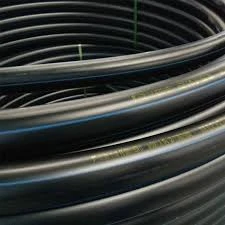ต.ค. . 10, 2024 23:47 Back to list
drip irrigation using pvc pipe
Drip Irrigation Using PVC Pipe A Sustainable Approach to Efficient Water Management
As water scarcity becomes a growing concern globally, innovative irrigation techniques like drip irrigation are gaining traction among farmers and gardeners alike. Drip irrigation is a highly efficient method of watering plants that minimizes water wastage while maximizing the delivery of nutrients to the roots. One of the most accessible materials for setting up a drip irrigation system is PVC (Polyvinyl Chloride) pipes. In this article, we will explore how to use PVC pipes for drip irrigation, the advantages of this method, and some tips for successful implementation.
Understanding Drip Irrigation
Drip irrigation involves delivering water directly to the base of plants through a network of tubing and emitters, allowing for precise control over water usage. Unlike traditional sprinkler systems, which distribute water over a large area and often lead to evaporation and runoff, drip irrigation ensures that each plant receives the exact amount of moisture it needs. This technique is particularly advantageous in regions with limited water resources, as it conserves water and promotes healthy plant growth.
Why Choose PVC Pipe for Drip Irrigation?
PVC pipes have become a popular choice for constructing drip irrigation systems for several reasons
1. Durability PVC is highly resistant to corrosion and degradation, making it suitable for long-term outdoor use. It can withstand varying weather conditions and is less likely to crack or break compared to other materials.
2. Cost-Effectiveness PVC pipes are relatively inexpensive, making them accessible for both small-scale and large-scale agricultural operations. This affordability allows even novice gardeners to implement effective irrigation solutions.
3. Customizability PVC pipes come in various diameters and lengths, allowing users to design systems tailored to their specific needs. They can be easily cut and connected, facilitating flexibility in layout and system modifications as plants grow.
drip irrigation using pvc pipe

4. Low Maintenance Once installed, a PVC drip irrigation system requires minimal upkeep. Regular checks for blockages and occasional cleaning of emitters are usually sufficient to maintain efficiency.
Setting Up a PVC Drip Irrigation System
1. Planning Your Design Begin by assessing the layout of your garden or farm. Identify the types of plants you will be watering, their spacing, and the overall area that needs irrigation.
2. Gathering Materials Purchase the necessary PVC pipes, fittings (tees, elbows, connectors), and drip emitters. You will also need a filter to prevent clogging and a pressure regulator to ensure consistent water flow.
3. Installation - Main Line Start by laying the main line of PVC pipe above ground or just below the soil surface, leading from your water source (such as a garden hose or faucet) to the area where your plants are located. - Lateral Lines From the main line, create lateral lines (smaller pipes) that extend toward individual plants or rows of plants. Attach drip emitters at appropriate intervals based on the water requirements of the plants. - Connection Use PVC cement to secure connections and prevent leaks. Ensure that all fittings are tightly connected to avoid water loss.
4. Testing the System Before planting, run water through the system to check for leaks and ensure that all emitters are functioning properly. Adjust the spacing and emitter position as necessary.
5. Regular Monitoring After installation, monitor the system regularly. Check for any signs of clogging, and make adjustments based on the plants' water needs, especially during dry spells.
Conclusion
Using PVC pipe for drip irrigation is an innovative and effective solution to manage water resources sustainably. With its cost-effectiveness, durability, and adaptability, PVC drip irrigation systems are suitable for a variety of gardening and agricultural scenarios. By implementing this technology, farmers and gardeners can optimize water usage, promote healthy plant growth, and contribute to sustainable agricultural practices. As we face increasing challenges related to water scarcity, adopting efficient irrigation methods like drip irrigation can make a significant difference in our food production systems and the environment.
-
High-Precision PVC Rigid Sheets for Vacuum Forming | AI-Optimized
NewsAug.05,2025
-
Durable PVC-M Water Supply Pipes | 60-Year Life
NewsAug.04,2025
-
Premium HDPE Water Supply Pipes: Durable & Leak-Proof
NewsAug.03,2025
-
Premium PVC-M Water Supply Pipe - Durable & Efficient
NewsAug.02,2025
-
Premium PP Welding Rod: GPT-4 Turbo Enhanced
NewsAug.01,2025
-
HDPE Drainage & Irrigation Pipe - Durable, Efficient Solutions
NewsAug.01,2025

